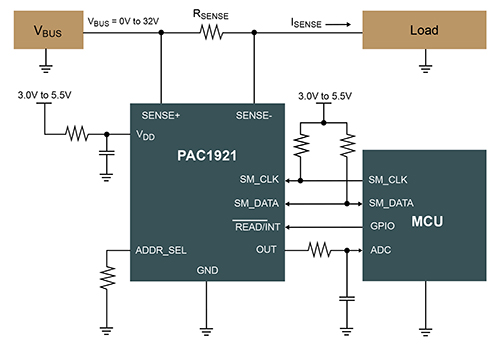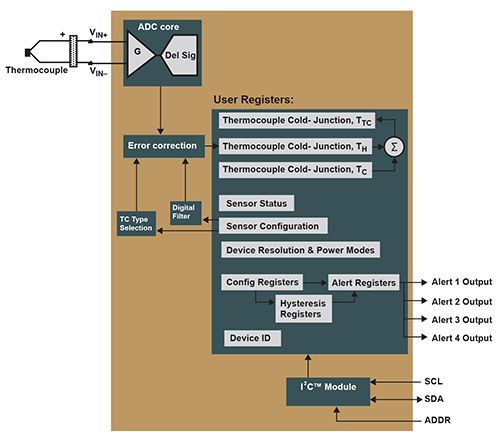In our coverage of sensors, we’ve seen increasing levels of abstraction as microcontrollers in or near the sensors handle the hard labor of extracting high-level information from low-level info. These are the hipster sensors that go on the wearables that go on your person for a month and then go on your nightstand.
Today, however, we’re going to get grittier and more obscure. Some sensors have more of a blue-collar feel to them, and I discussed two examples with Microchip back at Sensors Expo.
The first is a current sensor. Specifically, a “high-side” current sensor, meaning it goes in series with the upper power supply rail (not the ground rail). It can report current, voltage, or power. The unusual thing about this unit (the PAC1921) is that it provides both analog and digital outputs. “Why?” you may ask…
So much has moved to digital because, well, data can be provided in an orderly fashion, queried as needed by inquiring processors. FIFOs and advanced processing are available in the digital realm, and if you’re maintaining a history of power supply performance, digital is a great way to keep that tally.
Digital does, however, introduce latency. If you’re sensing the current and using the result in your power management algorithm, a bit of latency means that… oh, say, the voltage gets too high and you measure that and then digitize it and then put it someplace for a processor to find and then – oh, now look at that mess! Analog works much more quickly in a control loop. So here you get both.

(Image courtesy Microchip)
Then, off to a completely different unit: a temperature sensor. Well, actually, not the sensor itself, but the wherewithal to calculate temperature from a thermocouple.
Apparently our penchant for integration and abstraction has lagged in this corner of the world. While thermocouples can generate a voltage based on the temperature, calculating the precise temperature based on that voltage has been a discrete affair (not to be confused with a discreet affair). It requires lots of analog circuitry to measure the microvolt signal (typically done at a “cold” junction, away from the actual heat), digitize it, and then perform the math.
That math reflects the fact that thermocouples have a non-linear relationship between their output voltage and the temperature. And the details vary by thermocouple type. So this calculation is typically done in an external microcontroller.
This would make the new MCP9600 the first device fully integrated with all the bits needed to convert volts (from the thermocouple) into degrees Celsius. They refer to it as a thermocouple-conditioning IC, and it works for a wide range of thermocouple types (K, J, T, N, S, E, B and R for those of you keeping score).

(Image courtesy Microchip)
You can find more in their respective announcements: current sensor here, thermocouple here. We now return you to your white-collar sensors, which appear to have moved on from latte to white wine…






